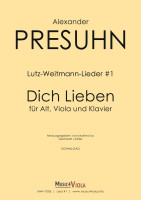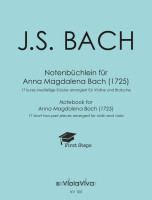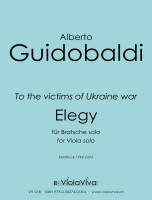
Sounds for freedom
Anabel Avendaño - Today we are going to explore unconventional gems for the viola repertoire, the first one which not only requires the violist to use the instrument in combination with electronics and unusual techniques but also narrates the emancipatory nature of music and the second one is more of a representation of traditional Iranian music.
The first piece is called Veiled (2019) For Solo Viola and Live Electronics with Fixed Media by composer Niloufar Nourbakhsh.
The composer describes it as an opportunity to show the courage that it takes to criticize or question normalized traditions that do not represent one's values. As an Iranian woman, she wants to expose the pain she witnesses from repressed women, whose voices are even banned from pursuing their singing careers. Reason why at some point of the piece the electronics are used to reproduce female voices and the viola register employed is used in such a way to emulate their voices. She describes the piece as a tribute to these women and also a way to transform the anger that the situation brings her and make it a powerful source of resilience.
Referring to the particular use of electronics, for the violist to be able to perform the piece with the whole equipment it is required to use a particular software MAX/MSP which is a popular tool for artists that allows them to create specific functions based on their creative requirements without the use of traditional coding, it is also needed to use a contact microphone and stereo speaker. Interestingly, the piece requires the musician to dive into technological tools to enhance and complete the piece.
The second piece is: Latent (2018) For Solo Viola (Originally written for the Violoncello) by
composer Aida Shirazi whose music is highly inspired by Persian and English literature.
This piece is full of musical elements characteristic of Iranian music employing quarter tones which as opposed to the traditional Western music system divides the chromatic scale in smaller intervals, about half as wide than a semitone, another particular element is the use of fingerpick like the one which is normally used for guitars, in this case is used to generate a sound characteristic of the traditional Persian instrument santur, which is a soundboard of metal strings that are struck with little mallets creating very resonant sounds, it is interesting to see how broad the sonic possibilities of the viola can be through the search for sounding characteristic of other traditional instruments.
Violist Muriel Razavi did a fantastic job interpreting these two pieces for the Berlin Prize for Young Artist see attached video: https://youtu.be/Zksx8h3JMzw?si=RgM8wb8hGtlJwuxQ which was used as inspiration for this blog.
Muriel is a recognized musician in today's stages she is a very diverse artist who performs in a wide range from baroque to contemporary music, apart from being a musician she studied for her Bachelor’s Degree in “The History and Culture of the Middle East – Iranian Studies" at the Freie Universität Berlin and a Master’s Degree in “Religion and Culture” at the Humboldt University in Berlin which has led her to combine both of her interest and as well has conducted research on Re-Orientalism in Music at the Hamburg University of Music and Theatre, it is interesting to see how she has forged her path as a classical musician without putting her love for humanities and Iranian culture on the side but rather creating a space to bring it to unconventional audiences and also places where other people can feel an identity with this music and the same time expanding the spectrum of what it is to be a classical musician nowadays that the quality of your musicianship is not inherent to only one job but musicians can be rather diverse and potentiate their artistry and career paths.
New download editions |
Dich Lieben
for Alto (Clarinet), Viola and Piano
Editor: Gerhardt Löffler
» to the edition with preview
New printed editions |
Notenbüchlein for Anna Magdalena Bach
arranged for Violin and Viola
17 short two-part pieces
First Steps series (Grades 1-3)
» to the edition with preview and audio files
Alberto Guidobaldi (*1967)Elegy - To the victims of Ukkraine war
for Viola solo
EUR 2.- PER EDITION SOLD WILL GO TO THE VICTIMS OF THE UKRAINE WAR.
» to the edition with preview
Viola Newsletter |
 Do you don't want to miss any news regarding viola anymore? Our monthly viola news letter will keep you informed.
Do you don't want to miss any news regarding viola anymore? Our monthly viola news letter will keep you informed.
» Subscribe to our viola letter for free
|
|
 Visit us on Instagram and don't forget to join our music community and share your thoughts about the composer or any other viola-related ideas!
Visit us on Instagram and don't forget to join our music community and share your thoughts about the composer or any other viola-related ideas!
» Music4Viola on Instagram
|
|
 Visit and like us on Facebook. The news articles are also posted.
Visit and like us on Facebook. The news articles are also posted.
» Music4Viola on Facebook


